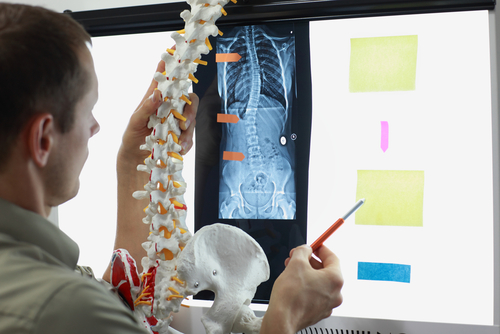Adult Patients with Cerebral Palsy at Greater Risk for Bone Problems, U.K. Study Finds

Adult patients with cerebral palsy have almost twice the risk of developing osteroarthritis, and about six-times greater risk of developing osteoporosis, a U.K. population-based study has found.
The findings, “Incidence of osteoarthritis, osteoporosis and inflammatory musculoskeletal diseases in adults with cerebral palsy: A population-based cohort study,” were published in the journal Bone.
People with cerebral palsy often develop secondary musculoskeletal disorders, such as spasticity (involuntary muscle movements), contractures, and bone deformities. Although cerebral palsy is not considered to be a progressive disorder, those affected commonly report that their symptoms and physical function worsen with age.
Cerebral palsy patients are at risk for developing bone problems such as osteoporosis, characterized by reduced bone density and higher bone fragility. In many cases this is due to the impact of decreased weight-bearing on bone mineral density throughout childhood.
Peak bone mass is established during childhood and up to early adulthood. So, weight-bearing exercises have been proposed as a strategy to boost bone density and bone growth in children with cerebral palsy to prevent future bone problems.
U.K. researchers evaluated the incidence of osteoarthritis (deterioration of joint cartilage that protects bones from rubbing on each other), osteoporosis, and inflammatory musculoskeletal diseases among adults with cerebral palsy compared with the general population.
They reviewed the electronic clinical records of general practices in the U.K. – stored at the Clinical Practice Research Datalink (CPRD). The study included 1,705 adult patients with cerebral palsy, ages from 20 to 42, and 5,115 patients without cerebral palsy, matched for age, sex, and clinical practice.
Patients with cerebral palsy developed osteoarthritis, osteoporosis, or inflammatory musculoskeletal diseases at a median age of 53.0, 55.1, and 38.9 years, respectively; meanwhile, those without cerebral palsy received a first diagnosis for those same bone disorders by median ages of 59.1, 68.6, and 52.7 years, respectively.
Comparison of the incidence of these disorders among the different patient population revealed that patients with cerebral palsy had a 1.54-fold and 6.19-fold increased risk of having osteoarthritis and osteoporosis, respectively, when compared to patients without cerebral palsy, even after accounting for potential confounding variables.
The team highlighted that many clinicians may clinically classify joint pains using different descriptors other than osteoarthritis. As such, these findings may underestimate the incidence of osteoarthritis in this population.
The analysis did not show any evidence of increased risk for inflammatory musculoskeletal diseases among cerebral palsy patients.
“These findings support the need for clinical awareness of osteoarthritis and osteoporosis as potential comorbidities in adults with cerebral palsy,” the researchers wrote.
“Osteoporosis and its sequelae [subsequent effects] might be prevented or mitigated using various approaches including dietetic intervention, weight-bearing physical activities, clinical screening, or pharmacological interventions,” they added.
They recommended further studies assessing these approaches’ therapeutic effectiveness.


